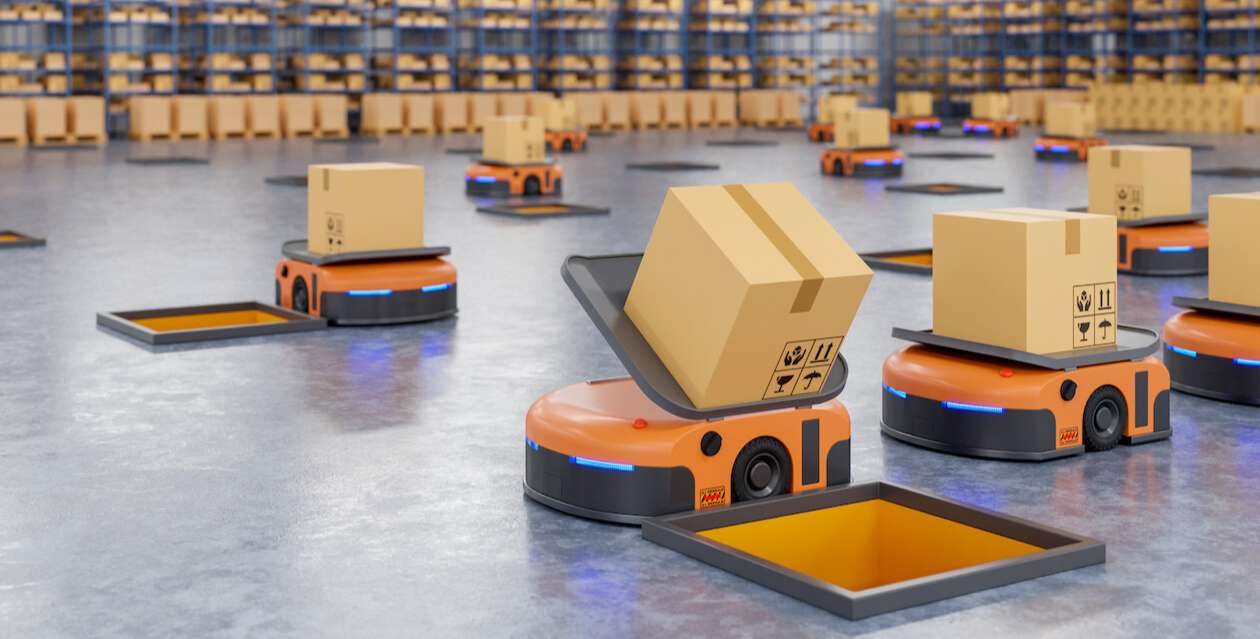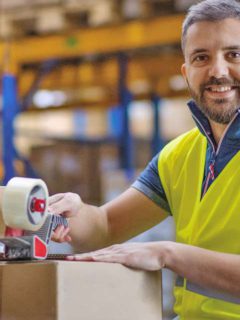Robots, drones, connected objects, smartphones… Technology is constantly integrating into our personal lives, improving the quality of life and making everyday tasks easier. These new technologies are integrating perfectly into all sectors of activity, and the logistics function is no exception to the rule!
In this article, we take a look at 6 new logistics technologies, both mature and under development, that could change your day-to-day supply chain management.
Big Data & Artificial Intelligence: where do we stand in logistics?
For several years now, we have been hearing a lot about Big Data in the media, i.e. the accumulation of data in companies. Now, this Big Data, applied to the field of logistics, and combined with artificial intelligence, offers opportunities to develop new logistics technologies.
The aim of these Warehouse 4.0 technologies is to streamline the entire supply chain, based on data from both your company’s own operations and external sources.
The result is predictive models that allow you to anticipate stock shortages and therefore organise supplies in advance. Ultimately, these technologies help you to better manage your logistics flows and warehousing. For example, certain models allow you to predict the state of stocks according to seasonality, market trends, or the selling price of a raw material.
These AI-based technologies can be directly integrated with other technologies that are already well established in medium and large warehouses, such as Warehouse Management Systems (WMS) or Enterprise Resource Planning (ERP). This is a trend in logistics management that should continue to grow exponentially in the coming years.

Connected objects: a boon to facilitate stock management
Have you ever heard of connected objects, also known as IoT ( Internet of Things)? They are already very present in our daily lives: home automation or voice assistants such as Amazon’s Alexa or Google Home are proof of this. Recently, this IoT has landed in warehouses, to help the logistics manager better manage the supply chain.
By equipping the racks in your warehouse with sensor systems, which are themselves linked to a powerful information system, you can detect the state of stock levels in real time.
In the long term, the aim of this technology is to replace physical inventories, which are time-consuming and prone to human error, and above all, to keep an accurate overview of your logistics flows at all times.
Gyropod and carrier: new technologies to facilitate handling
More and more warehouses are looking for innovative technologies to improve the daily movements and handling of their teams. The aim is to speed up the rate of packing by improving the management of physical flows, but also to limit the risk of Musculoskeletal Disorders (MSDs) and arduous work in the warehouse
To achieve this, two everyday technologies are being used in your storage area
The gyropoda new generation of mobile warehouse equipment, the ‘E3840a09-e78-4d26-a9-0-ff17a9ce97f1’, which allows pickers to move effortlessly around the warehouse, is easy to manoeuvre in the pedestrian areas of your premises and allows you to quickly move to another area of the warehouse.
The electric carrierit is an interesting technology for speeding up your inventories, but also for light picking operations.
What a way to rationalise your human flows and improve the quality of life at work for your teams!
The exoskeleton: an emerging logistics technology against MSD
For years now, the INRS and its ergonomics specialists have been working on the development of a technology that could well revolutionise logistics: exoskeletons.
An exoskeleton is a mechanical structure that your operators can wear, which transfers energy to them in order to reduce the excessive strain on their muscles. The exoskeleton thus helps them to reduce the strain on a specific muscle during a simple and repetitive movement in the supply, order preparation or handling phase.
It is thereforean ideal logistics technology for reducing the risk of Musculoskeletal Disorders (MSD) in the warehouse. Although it is not yet mature enough to be used in all warehouses, the INRS is actively working on and testing these exoskeletons in real conditions. In a few years’ time, we can see the democratisation of this technology in the logistics and transport sector.
Robotics: welcome to warehouse 4.0
Are you familiar with cobots, or “collaborative robots”? These are robots that take over certain logistical operations from operators, to help them focus on tasks where humans have real added value.
For example, a cobot can take care of the entire packaging of products, while the human takes care of the quality of the packaging behind it. This is a real asset for your logistics organisation and, once again, helps to avoid RSI!
Although this is still an emerging technology, in the years to come it could significantly reduce drudgery in the warehouse, speed up order picking, and help logistics departments deliver an optimal customer experience to their clients. The logistics sector has only to be careful: the robots are coming!
Technology for optimising freight transport
As a logistics provider, you know that the transport phase of your supply chain plays a crucial role in the experience you offer your customers. Customers increasingly expect reliable shipments and deliveries, via modes of transport chosen by them, with optimal traceability.
This is why we are seeing the emergence of technologies that aim to optimise the quality of the delivery, but also to rationalise transport costs:
- Transport Management Systems (TMS) are now going further, and becoming Transport Management Platforms (TMP), collaborative technologies, which allow to accumulate more data (from the different users of the platform, but also via shippers, carriers and forwarders of the transport and logistics sector), to better trace the shipments of the service providers (of road transport, maritime transport, and others).
- Drones and autonomous vehicles continue to grow in power day by day for faster deliveries and are particularly well suited to an urban logistics strategy to manage the logistics of deliveries in cities in an optimal way.
- Automated lockers are also becoming more and more popular, giving customers the opportunity to pick up their parcels in a secure area, whenever they want. This will further improve the customer experience of your global logistics!
Logistics and Supply Chain Management professionals, are you ready to integrate these technologies into your warehouse?















